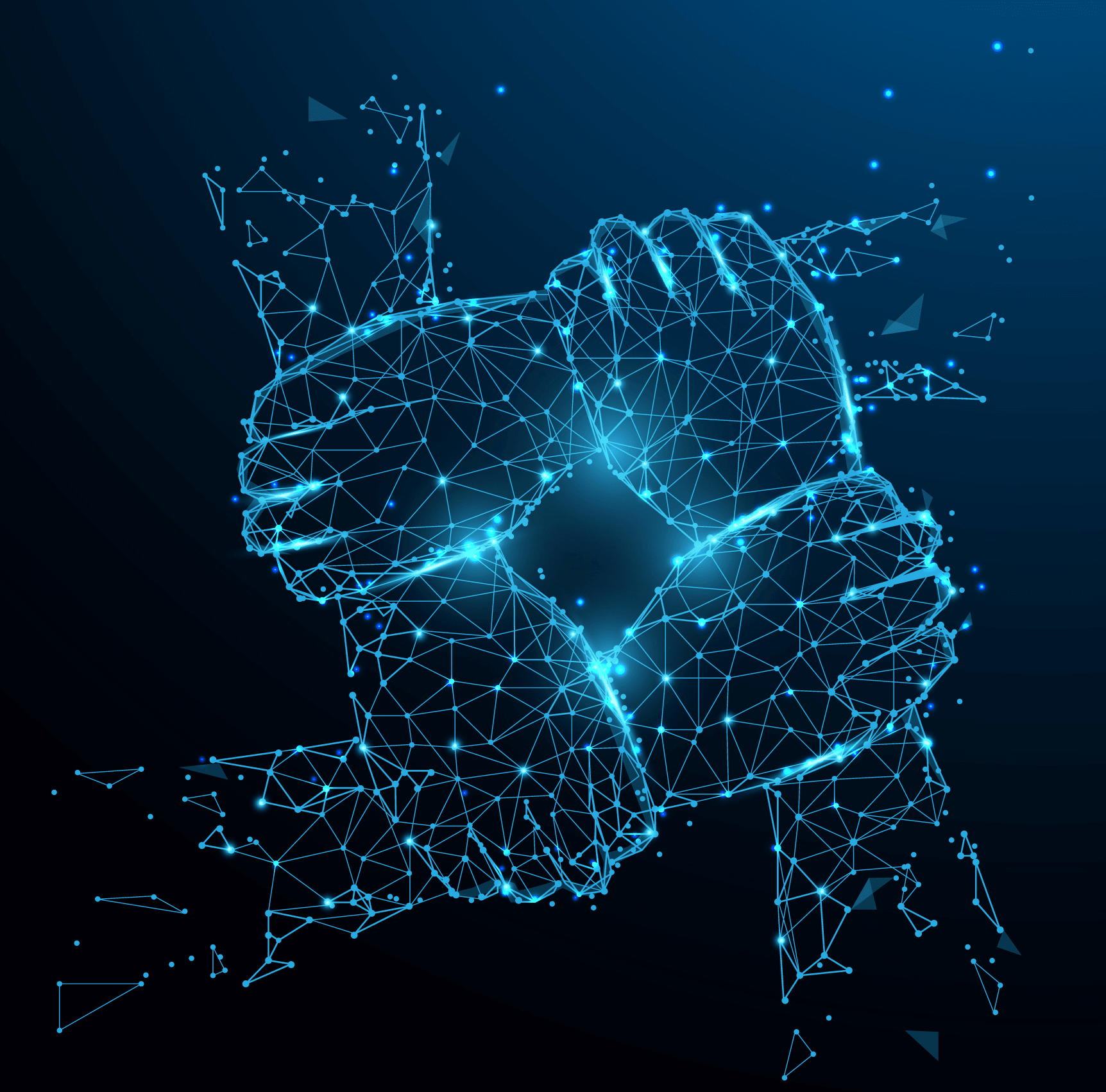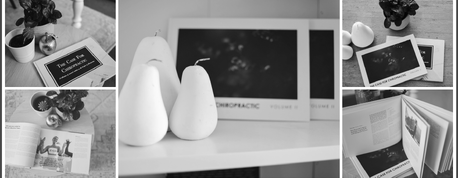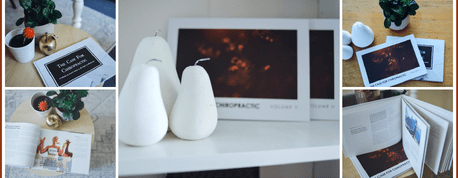December 2021 Asia Pacific Chiropractic Journal
Bonus Issue: The Rome & Waterhouse special
UPDATE: The Omicron Variant – December 27, 2021
Abstract To provide a rapid overview of the current published knowledge of the Omicron Variant, as a pre-publication update for the 3-part series ‘COVID-19 and the role of chiropractic in the healthcare arena. This series is scheduled for publication in these pages in January2022.
Indexing Terms: chiropractic; immunity; COVID; Omicron; variant
Cite: Blum C. Covid-19 and the role of chiropractic in the healthcare arena: Omicron Variant: Pre-Publication Update, 27 December 2021. Asia-Pac Chiropr J. 2021;2.4. URL apcj.net/papers-issue-2-4/#BlumOmicron
Editorial: Tomorrow's chiropractic is as good as you make it today
WCCS: The image problem of chiropractic - a student’s perspective
Cade at al: Changes in post-chemotherapy neurological deficits after chiropractic care: A case report
Ebrall: Looking forward, looking back: The work of Suh
JC Smith: Column - Medical Kickbacks

Neurodynamics of vertebrogenic somatosensory activation and Autonomic Reflexes - a review:
Rome & Waterhouse: Preface
Rome & Waterhouse: Part 1 - The introduction to a clinical series
Rome & Waterhouse: Part 2 - Autonomic nervous system and somatic reflexes
Rome & Waterhouse: Part 3 - A central connection
Rome & Waterhouse: Part 4 - Vertebrogenicity
Rome & Waterhouse: Part 5 - Diversity in Vertebral Subluxations
Rome & Waterhouse: Part 6 - International medical literature and its clinical application of the somatovisceral model
Neurodynamics of vertebrogenic somatosensory activation and Autonomic Reflexes - a review:
Rome & Waterhouse: Part 7 - The Cerviogenic Factor
Rome & Waterhouse: Part 8 - The Cranial Nerves and the Cervical Spine
Rome & Waterhouse: Part 9 - Cervicogenic headaches
Rome & Waterhouse: Part 10 - Vertebral adjustment of the vertebral subluxation - more than manipulation
Rome & Waterhouse: Part 11 - The vertebral (somatic) autonomic influence upon other organs and functions
Rome & Waterhouse: Part 12 - General considerations
Rome & Waterhouse: Part 13 - Discussion, summary and conclusion

Tomorrow's chiropractic is as good as we make it today
Abstract: The Journal is overwhelmed by the reception of the first Case Report published through our association with the ASRF. The joyous news is that the January issue will carry a further seven {7} case reports and these broadly address the manifestation of ‘immunity’ in real- world practice. Many more will follow during 2022.
The January issue will also carry supporting papers as guides to what you, as a conventional chiropractor, can do without controversy and in an evidence-based manner to assist your patients in the Post-pandemic Era.
Even though some 30 chiropractors contributed to this project this year we are aware that many more are realising ‘I do this or that ...’ and would now like to contribute as well. To this end the Journal is working with the ASRF to seek more contributions over the coming year.
This is a most remarkable project by the ASRF in any sense of the word. Here we have a strong funding body leading our profession by judiciously raising funds through the Spinal Hero Month and then investing those generous monies into a professional writing team to turn real-world clinical observations into peer-reviewed, indexed papers which contribute to the scientific evidence-base of our profession.
Cite: Ebrall P. Chiropractic’s tomorrow is as good as you make it today [Editorial]. Asia-Pac Chiropr J. 2021;2.4. URL apcj.net/papers-issue-2-4/#EbrallDec21
Changes in post-chemotherapy neurological deficits after chiropractic care: A case report
Abstract:
Objective The objective of this case study is to report changes to ongoing neurological deficits experienced post-chemotherapy after chiropractic care.
Clinical Features A 20-year-old female presented with a five-year history of chemotherapy-induced neurological deficits. She received twelve months of intravenous chemotherapy for osteosarcoma treatment. Post chemotherapy, she reported paraesthesia in her hands and feet, which was more severe in the left arm. She also reported decreased sensation in the left leg from the mid femur to the foot as well as the right foot. At age sixteen, she was also diagnosed with depression and anxiety.
Intervention The patient was placed on a combination of chiropractic techniques, upper cervical specific and diversified, for three months. The patient was placed on a care plan consisting of twice a week for the first three weeks before a progress examination was performed. The main area that was adjusted throughout this care plan was C1.
Outcomes At the progress examination on the sixth visit, the patient stated that she had experienced an improvement in mobility, strength, mood, independence, sleep, and digestion. Upper and lower limb dermatomes had improved sensation, and muscle strength was increased. Cerebellar function, eye movements, and hearing had all returned to normal. All cervical range of motion was improved, as were her RAND-36 scores.
Conclusion This case report details changes in neurological symptoms post-chemotherapy after chiropractic care. This case report aims to be a building block for further research investigating any potential link between regular chiropractic care and improved neurological function post-chemotherapy.
Indexing terms: Chiropractic; Paraesthesia; Osteosarcoma; Anxiety disorders; Depression; Antineoplastic Agents.
Cite: Cade A, Fisher-Van de Veen W, Te Wharau C. Changes in post-chemotherapy neurological deficits after chiropractic care: A case report. Asia-Pac Chiropr J. 2021;2.4. URL apcj.net/papers-issue-2-4/#CadePostchemocare
Chung-Ha Suh PhD. The Proof of Subluxation. The final report of chiropractic research at the University of Colorado. 2017
Abstract:
In the ’80s I heard about Dr Suh and his demonstrations of how a five cent coin pressing on a nerve could make it not quite the lightning network we had come to worship as a natural wonder, and thats when the proverbial penny dropped, unnerving me as a young excited student. There was hope we could prove a subluxation was the bad-boy that Mr. Lillard heard it was on the Brady Street grapevine, post DD thrust.
Now I find myself not quite thirty years down the track where I am told I can neither remove or detect a subluxation without the presence of double blind placebo controlled study (that medicine hasn’t done for at least 90% percent of its surgical peddling for at least 90% of its modern times), and research seems to have become an elitist money pit (Say no more, it gets ugly).
Then, just when there is little word of Suh and his Colorado crew for the past twenty years, I find out he worked closely with my mentor Dr Roy Sweat causing me to pause to enquire about his work once and for all, thanks to resources accessed via Sweat’s chief operational angel, Mrs Tecla Sweat.
This paper reviews Suh's written notes to provide a background for the video also presented here, in the Journal.
Cite: Ierano J. Chung-Ha Suh PhD. The Proof of Subluxation. The final report of chiropractic research at the University of Colorado. 2017. Asia-Pac Chiropr J. 2021;2.4. URL apcj.net/papers-issue-2-4/#IeranoSuh
Looking forward, looking back. The work of Suh
Abstract:
Suh’s findings did not travel well. Nor was his funding renewed for reasons yet to be discovered. However Suh’s scholarship was certainly the wake-up call that caused a major shift in the attitude of the profession toward research.
As such, today it is appropriate to consider Suh’s work as one of the early ‘events’ that focused the profession on the value of doctoral-level research, properly conducted and well-reported. This was a paradigm shift, remembering that it takes a significant event to shift a profession’s way of thinking, and the shift was towards the value of scholarly inquiry to validate and advance the profession rather than litigation or legislation.
Cite: Ebrall P. Looking forward, looking back: The work of Suh. Asia-Pac Chiropr J. 2021;2.4. URL apcj.net/papers-issue-2-4/#EbrallSuh

Rome and Waterhouse Preface
Abstract
A series of 12 review papers are presented in order to assess some of the available evidence relating to the vertebrogenic effects of a vertebral subluxation. The offered material includes the neurophysiology, pathoneurophysiology, neural reflexes, and clinical presentations.
The Parts are:
Part 1 Introduction
Part 2 Autonomic nervous system and somatic reflexes
Part 3 A Central connection
Part 4 Vertebrogenicity - The Vertebral Subluxation Complex
Part 5 Diversity in vertebral subluxations
Part 6 International medical literature - clinical application of the somatovisceral model
Part 7 The cervicogenic factor
Part 8 The cranial nerves and the cervical spine - Including Cr 0, XIII, and XIV
Part 9 Cervicogenic headaches
Part 10 Clinical management The Vertebral Adjustment
Part 11 The vertebral (somatic) autonomic influence upon other organs and functions
Part 12 General considerations
Part 13 Summary and Conclusion
Indexing terms: Vertebral subluxation; Neurophysiology; Somatosensory; Autonomic nervous system.
Cite: Rome P. Waterhouse JD. Neurodynamics of vertebrogenic somatosensory activation and Autonomic Reflexes - a review: The introduction to a clinical series. Asia-Pacific Chiropr J. 2021;1.4. URL apcj.net/papers-issue-2-4/#RomeWaterhousePreface
Part 1 The introduction to a clinical series
Abstract
Neurological factors associated with the vertebral subluxation are presented together with recognition of the clinical entity by the chiropractic, medical and osteopathic professions.
Noxious activation of somato-autonomic reflexes is an established physiological response to sensory phenomenon.
While neuro-phenomenon is recognised physiologically it appears, due recognition of the vertebrogenic origin in somatosensory physiology seems to be limited in clinical medicine.
Indexing terms: Vertebral subluxation; Neurophysiology; Somatosensory; Autonomic nervous system
Cite: Rome P. Waterhouse JD. Neurodynamics of vertebrogenic somatosensory activation and Autonomic Reflexes - a review: The introduction to a clinical series. Asia-Pacific Chiropr J. 2021;1.4. URL apcj.net/papers-issue-2-4/#RomeWaterhouseIntroduction
Part 2 - Autonomic nervous system and somatic reflexes
Abstract
Somatosensory reflexes inherently involve the autonomic nervous system as a natural physiological response from their activation to both physiological and pathophysiological stimuli. It is the noxious sensory bombardment that is suspected of being the neural factor with disturbed vertebral facets as discussed here as a current rationale behind the vertebral subluxation phenomenon.
Indexing terms: Vertebrogenic; somatosensory; autonomic reflexes; subluxation; chiropractic
Cite: Rome P. Waterhouse JD. Neurodynamics of vertebrogenic somatosensory activation and Autonomic Reflexes - a review: Part 2 Autonomic nervous system and somatic reflexes. Asia-Pacific Chiropr J. 2021;1.4. URL apcj.net/papers-issue-2-4/#RomeWaterhousePart2
Part 3 - A central connection
Abstract
A review is presented of the central nervous system association with noxious sensory activation of vertebral articulations from disturbed segmental mechanics. Examples of neurological studies reflecting and supporting this physiological function are presented.
Indexing terms: Vertebrogenic; somatosensory; autonomic reflexes; subluxation; chiropractic
Cite: Rome P. Waterhouse JD. Neurodynamics of vertebrogenic somatosensory activation and Autonomic Reflexes - a review: Part 3 A central connection. Asia-Pacific Chiropr J. 2021;1.4. URL apcj.net/papers-issue-2-4/#RomeWaterhousePart3CentralConnection
Part 4 - Vertebrogenicity
Abstract
A discussion on the disturbance of articular physiology and its general identification is presented. The recognition of vertebrogenicity is essential to the manual professions of chiropractic, osteopathy and more recently, manipulative medicine and physiotherapy. The clinical appreciation of this clinical entity is supported in the literature.
Indexing terms: Vertebral subluxation; Neurophysiology; Somatosensory; Autonomic nervous system
Cite: Rome P. Waterhouse JD. Neurodynamics of vertebrogenic somatosensory activation and Autonomic Reflexes - a review: Part 4 Vertebrogenicity. Asia-Pacific Chiropr J. 2021;1.4. URL apcj.net/papers-issue-2-4/#RomeWaterhousePart4Vertebrogenicity
Part 5 - Diversity in Vertebral Subluxations
Abstract
Elements of the subluxation model are well known but other aspects are still emerging. Some remain in a contextual sense. This review presents a synopsis of currently available hypotheses on the types of segmental disturbances, the need for specificity, research involving animal subjects, and why the focussed adjustment to normalise dysfunctional segments is a significant part of the chiropractic model.
Indexing terms: Vertebral subluxation; Neurophysiology; Somatosensory; Autonomic nervous system
Cite: Rome P. Waterhouse JD. Neurodynamics of vertebrogenic somatosensory activation and Autonomic Reflexes - a review: Part 5 Diversity in Vertebral Subluxations. Asia-Pacific Chiropr J. 2021;1.4. URL apcj.net/papers-issue-2-4/#RomeWaterhousePart5Diversity
Part 6 - International medical literature and its clinical application of the somatovisceral model
Abstract
A compilation of over 150 medical papers is presented in order to represent the recognition of spinal manipulation and the clinical involvement for the potential of vertebrogenic pathophysiology as reported by international allopaths. (Appendix A)
Indexing terms: Vertebral subluxation; Neurophysiology; Somatosensory; Autonomic nervous system; Somatovisceral model
Cite: Rome P. Waterhouse JD. Neurodynamics of vertebrogenic somatosensory activation and Autonomic Reflexes - a review: Part 6 International medical literature and its clinical application of the somatovisceral model. Asia-Pacific Chiropr J. 2021;1.4. URL apcj.net/papers-issue-2-4/#RomeWaterhouseIntMedLit6
Part 7 - The Cervicogenic Factor
Abstract
Articular activation of sensory nerves should not be seen as being limited to nociceptive receptors as other neural sensory pathways are also vulnerable to noxious stimulation.
Indexing terms: Vertebral subluxation; cervicogenic; Somatosensory; Autonomic nervous system
Cite: Rome P. Waterhouse JD. Neurodynamics of vertebrogenic somatosensory activation and Autonomic Reflexes - a review: Part 7 The Cervicogenic Factor. Asia-Pacific Chiropr J. 2021;1.4. URL apcj.net/papers-issue-2-4/#RomeWaterhousePart7Cervicogenic
Part 8 - The Cranial Nerves and the Cervical Spine
Abstract
Cervicogenic correlation with the cranial nerves suggests a convenient accessibility for influencing certain syndromes, with the most recognised one being cervicogenic headaches although a number of other conditions are also noted.
Indexing terms: Vertebral subluxation; Neurophysiology; Cranial Nerves; Cervical spine
Cite: Rome P. Waterhouse JD. Neurodynamics of vertebrogenic somatosensory activation and Autonomic Reflexes - a review: Part 8 The Cranial Nerves and the Cervical Spine. Asia-Pacific Chiropr J. 2021;1.4. URL apcj.net/papers-issue-2-4/#RomeWaterhousePart8CranialNerves
Part 9 - Cervicogenic Headaches
Abstract
In the manipulative health sciences, cervicogenic headaches (CGH) has been a classic condition to be regarded as a somato-autonomic-visceral condition (Type O) as opposed to a musculoskeletal condition (Type M) such as low back pain. The patho-neurophysiology of CGHs leads to the probability of vertebrogenic associations at different segmental levels with other non-musculoskeletal conditions.
Indexing terms: Vertebral subluxation; Cervicogenic Headache; Cervical spine; Headache
Cite: Rome P. Waterhouse JD. Neurodynamics of vertebrogenic somatosensory activation and Autonomic Reflexes - a review: Part 9 Cervicogenic headaches. Asia-Pacific Chiropr J. 2021;1.4. URL apcj.net/papers-issue-2-4/#RomeWaterhouseCervicogenicHeadaches
Part 10 - Vertebral adjustment of the vertebral subluxation - more than manipulation
Abstract
The emergence of a profession as a distinctly separate model model in health care is identified by its unique title. Similarly, its uniqueness may also be identified by its distinct use of particular terminology, otherwise it would be difficult to differentiate from any other profession. Consequently, chiropractic has developed two particularly distinctive terms, the vertebral adjustment and the vertebral subluxation. Due to being multifaceted, this latter term is becoming supplanted by the more descriptive term vertebral subluxation complex (VSC). Subluxation of peripheral joints may also be adjusted when indicated. Adjustments are an advanced, specific and finely tuned form of the generic term manipulation.
Indexing terms: Vertebral subluxation; Vertebral adjustment; chiropractic
Cite: Rome P. Waterhouse JD. Neurodynamics of vertebrogenic somatosensory activation and Autonomic Reflexes - a review: 10 Vertebral adjustment of the vertebral subluxation - more than manipulation. Asia-Pacific Chiropr J. 2021;1.4. URL apcj.net/papers-issue-2-4/#RomeWaterhouseAdjustment
Part 11 - The vertebral (somatic) autonomic influence upon other organs and functions
Abstract
The basis of a vertebrogenic somato-autonomic-visceral triad comprises a biomechanical alteration to a vertebra’s normal physiological state, activation of its sensory receptors leading to noxious stimulation of somatoautonomic reflexes. It is opined that these key pathophysiological elements may culminate in signs and symptoms indicating dysfunction or pathophysiology of anatomical structures innervated from that segmental level. An evidence base of this biological phenomenon is drawn from research by neurophysiologists, clinical reports by medical doctors in published literature, and acknowledged by patients demand.
This paper presents a summary of studies involving visceral responses as well as clinical narratives related to these somatic vertebral aberrations. The physiology behind the premises of somatovisceral effects is primarily available on PubMed. However adoption of this clinical model for patient health and welfare, are predominantly limited to the professions of chiropractic, osteopathy with some from Continental European medicine.
Indexing terms: Vertebral subluxation; autonomic influence; chiropractic; Heart Rate Variability
Cite: Rome P. Waterhouse JD. Neurodynamics of vertebrogenic somatosensory activation and Autonomic Reflexes - a review: Part 11 The vertebral (somatic) autonomic influence upon other organs and functions. Asia-Pacific Chiropr J. 2021;1.4. URL apcj.net/papers-issue-2-4/#RomeWaterhouseInfluence
Part 12 - General considerations
Abstract
Given the volume of available evidence, it would be remiss to dismiss the concept of a somatosensory-ANS-visceral reflex model of pathophysiology. This phenomenon is offered as one of the models contributing to the documented clinical focus of a manual therapeutic influence. The rationale for manipulative intervention explicates the necessity to remove or modify noxious somatic input upon the physiological function of related innervated structures. While it may be a factor in a number of clinical conditions, this vertebral Somatic Autonomic Visceral Complex (SAVC) is not claimed to provide all ætiological answers or be a panacea. However, as an integral component of a subluxation the complex may be indicated by the presence of associated signs and symptoms.
Indexing terms: Vertebral subluxation; Neurophysiology; Somatosensory; Autonomic nervous system
Cite: Rome P. Waterhouse JD. Neurodynamics of vertebrogenic somatosensory activation and Autonomic Reflexes - a review: Part 12 General considerations. Asia-Pacific Chiropr J. 2021;1.4. URL apcj.net/papers-issue-2-4/#RomeWaterhouse12General
Part 13 - Discussion, summary and conclusion
Abstract
This series sought to present published material relative to somatosensory pathophysiology associated with the hypotheses underpinning the clinical findings of vertebral subluxations. It also provides evidential rationale relative to manual or instrument adjusting of biomechanical segmental pathomechanics. While the greater part of the evidence for the fundamental principles of vertebrogenic conditions is from medical sources, most of the clinical evidence of positive manipulative outcomes based on those principles are chiropractic and osteopathic sources, with some from Western European medical doctors. A range of finely tuned and highly specific segmental adjustive techniques are available in order to restore segmental joint physiology and normalise noxious sensory input which may be associated with particular clinical presentations. It is acknowledged that the concept behind this subluxation model is dynamic, and that continuing research may well further explicate its physiological rationale, its degree of clinical contribution, and the potential for appropriate deployment of physical correction.
Indexing terms: Vertebral subluxation; Neurophysiology; Somatosensory; Autonomic nervous system
Cite: Rome P. Waterhouse JD. Neurodynamics of vertebrogenic somatosensory activation and Autonomic Reflexes - a review: Part 13 - discussion, summary and conclusion. Asia-Pacific Chiropr J. 2021;1.4. URL apcj.net/papers-issue-2-4/#RomeWaterhouse13Conclusion




